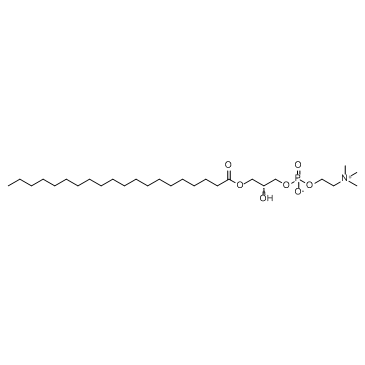Endogenous Metabolite
Metabolite results when a drug is metabolized into a modified form which continues to produce effects. A metabolome in a given body fluid is influenced by endogenous factors such as age, sex, body composition and genetics as well as underlying pathologies.The levels of the enormous array of unique small-molecule metabolites are usually kept tightly regulated by the activity of a very large array of enzymes and transporters responsible for the production, transformation, degradation, and compartmentalization of these small molecules.The levels of the endogenous small molecules present in the brain are normally tightly regulated.
Ziele für Endogenous Metabolite
Produkte für Endogenous Metabolite
- Bestell-Nr. Artikelname Informationen
-
GC11282
β-Estradiol
Geschlechtshormon
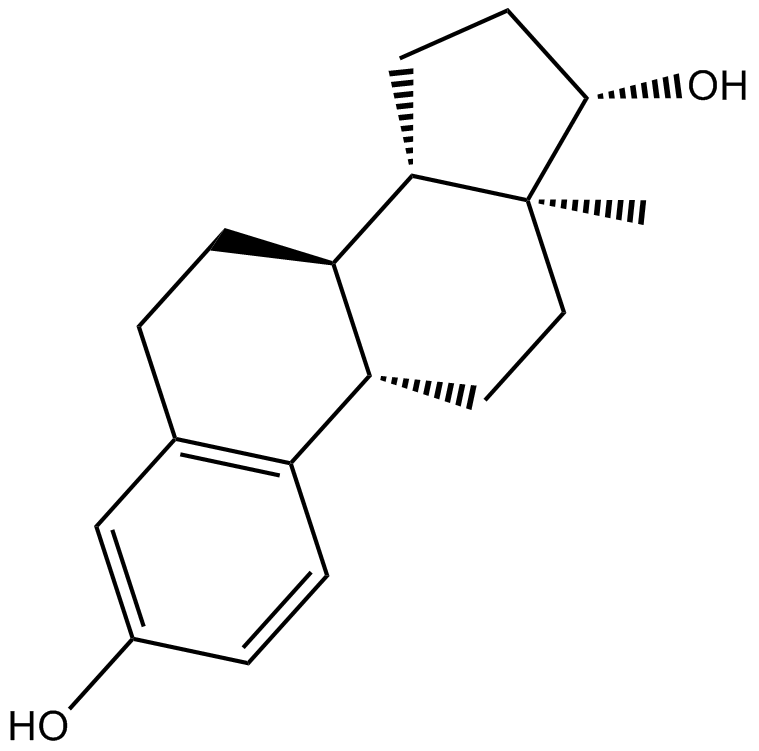
-
GC41183
α-Carotene
α-Carotin, eine Vorstufe von Vitamin A, wird als antimetastatisches Mittel oder als Adjuvans fÜr Krebsmedikamente verwendet. α-Carotin wird aus gelb-orangen und dunkelgrÜnen GemÜsen isoliert.

-
GC48948
α-Ketoglutaric Acid (sodium salt)
α-KetoglutarsÄure (Natriumsalz) (Alpha-KetoglutarsÄure-Natrium) ist ein Zwischenprodukt bei der Produktion von ATP oder GTP im Krebszyklus.

-
GC40718
α-Muricholic Acid
α-MuricholsÄure ist die am hÄufigsten vorkommende primÄre GallensÄure bei Nagetieren.

-
GC38287
α-Pyridone
α-Pyridon ist ein körpereigener Metabolit.
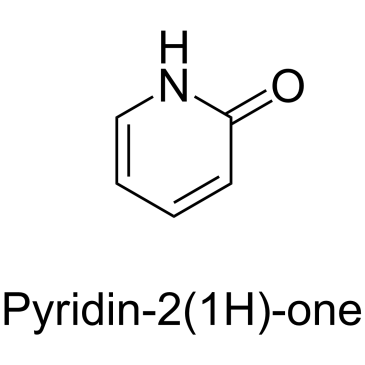
-
GC63275
β-Cryptoxanthin
β-Cryptoxanthin ((3R)-β-Cryptoxanthin), isoliert aus Satsuma-Mandarinenorange, ist ein sauerstoffreiches Carotinoid und ein starkes Antioxidans.
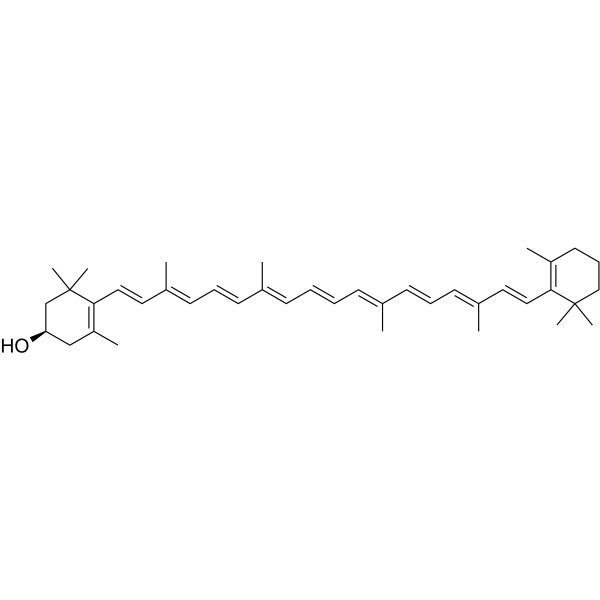
-
GC40777
β-D-Glucose
D-Glucose, a naturally occurring monosaccharide found in plants, is the primary energy source for living organisms.

-
GC66842
β-Methylcrotonyl coenzyme A lithium
β-Methylcrotonyl Coenzym A Lithium ist ein Zwischenprodukt im Leucinstoffwechsel und kann als Substrat zur Untersuchung der Spezifität und Kinetik von β-Methylcrotonyl Coenzym A Carboxylase (MCCase) verwendet werden.
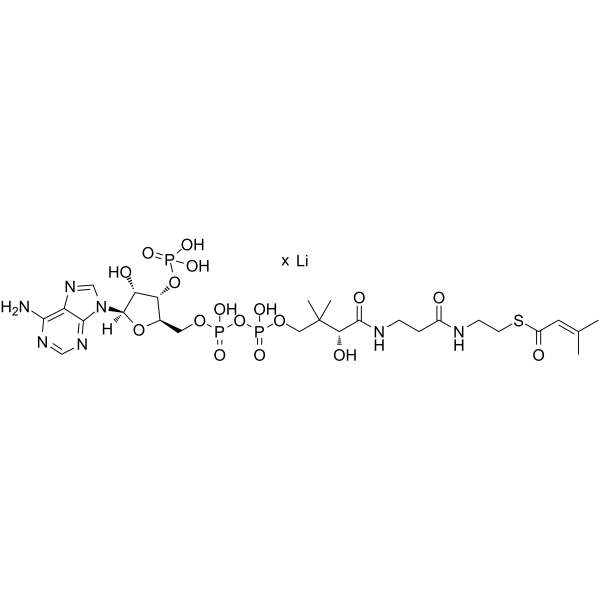
-
GC40719
β-Muricholic Acid
Ein murinspezifisches primäres Gallensalz

-
GC67484
β-Nicotinamide adenine dinucleotide reduced dipotassium
β-Nicotinamid-Adenin-Dinukleotid-reduziertes Dikalium ist ein oral aktives reduziertes Coenzym. β-Nicotinamidadenindinukleotid-reduziertes Dikalium ist ein Donor von ADP-Riboseeinheiten in ADP-Ribosylierungsreaktionen und ein Vorläufer von zyklischer ADP-Ribose. β-Nicotinamidadenindinukleotid-reduziertes Dikalium spielt eine Rolle als regenerativer Elektronendonor im zellulären Energiestoffwechsel, einschließlich Glykolyse, β-Oxidation und Tricarbonsäure (TCA)-Zyklus.
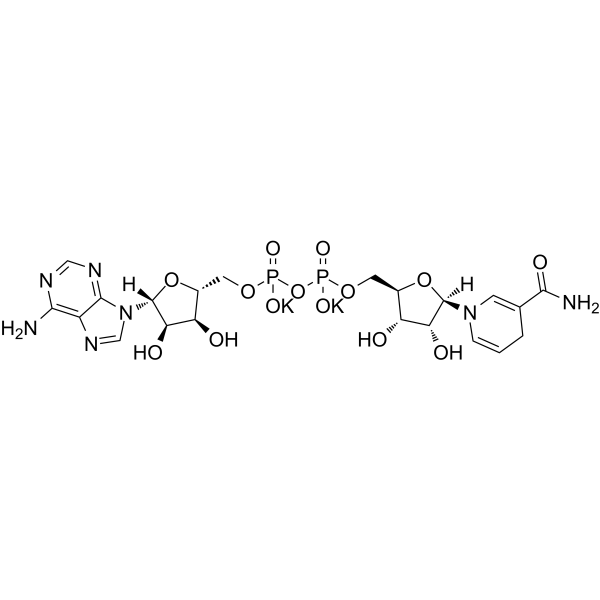
-
GC38010
γ-Aminobutyric acid
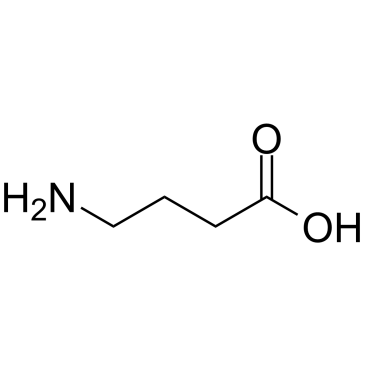
-
GC63279
γ-Glu-Gly TFA
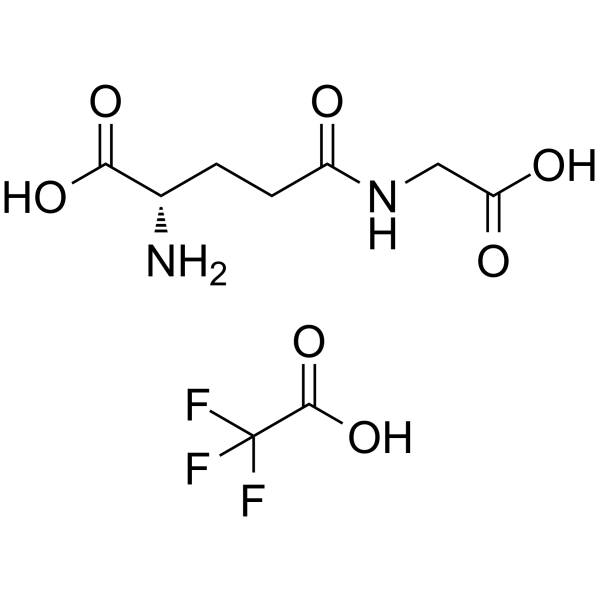
-
GC15975
α-Estradiol
α-Estradiol ist ein schwaches Östrogen und ein 5&7#945;-Reduktasehemmer, der als topisches Medikament bei der Behandlung von androgener Alopezie verwendet wird.
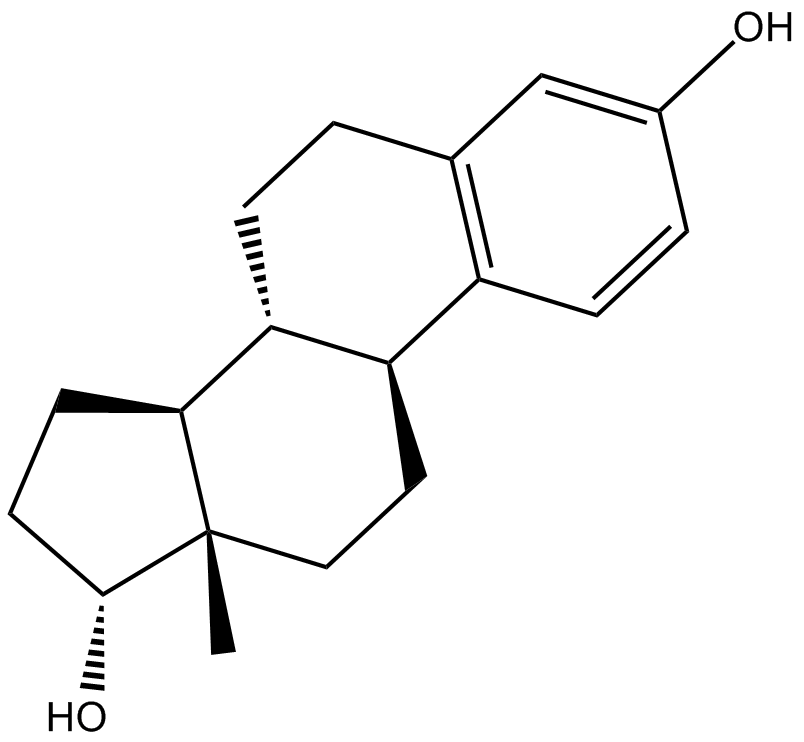
-
GC30187
γ-Glu-Phe (γ-Glutamylphenylalanine)
γ-Glu-Phe (γ-Glutamylphenylalanin) (⋳-Glutamylphenylalanin) wird von Bacillus amyloliquefaciens (GBA) und Aspergillus oryzae (GAO) synthetisiert.
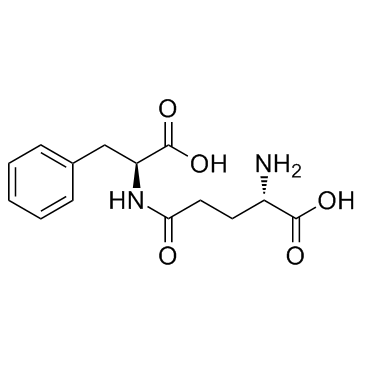
-
GC41670
(±)-Epinephrine (hydrochloride)
(±)-Epinephrine is a natural neurotransmitter that is released from the adrenal medulla and activates adrenoceptors (Kis = 15, 735, and 3,970 nM for α1A-, β2-, and β1-adrenergic receptors, respectively).

-
GC38369
(±)-Leucine

-
GC65599
(±)-Leucine-d10
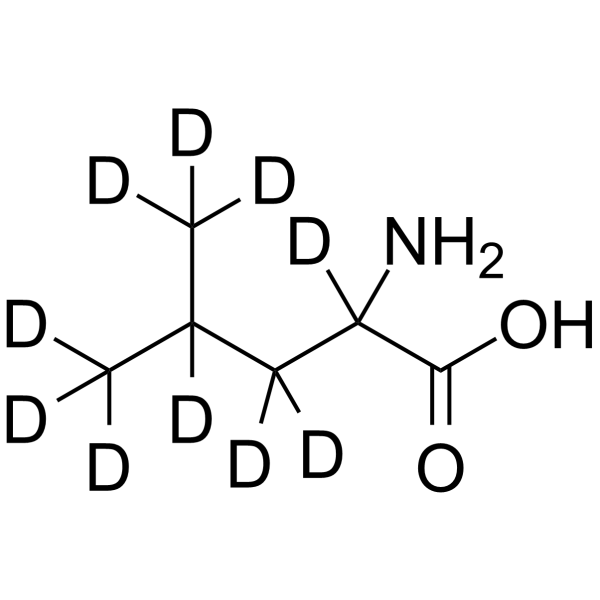
-
GC39271
(±)-Naringenin
(±)-Naringenin ist ein natürlich vorkommendes Flavonoid.
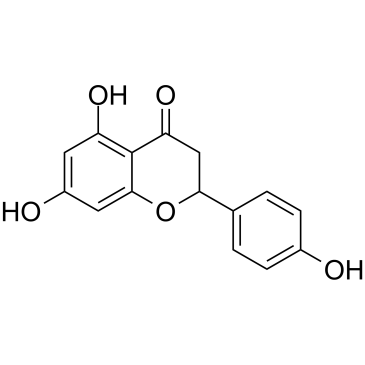
-
GC13890
(±)-Palmitoylcarnitine chloride
(±)-Palmitoylcarnitinchlorid ist ein von Fettsäuren abgeleitetes mitochondriales Substrat und verringert selektiv das Zellüberleben in Darm- und Prostatakrebszellen, indem es entzündungsfördernde Signalwege, Ca2+-Einstrom und DHT-ähnliche Wirkungen beeinflusst.
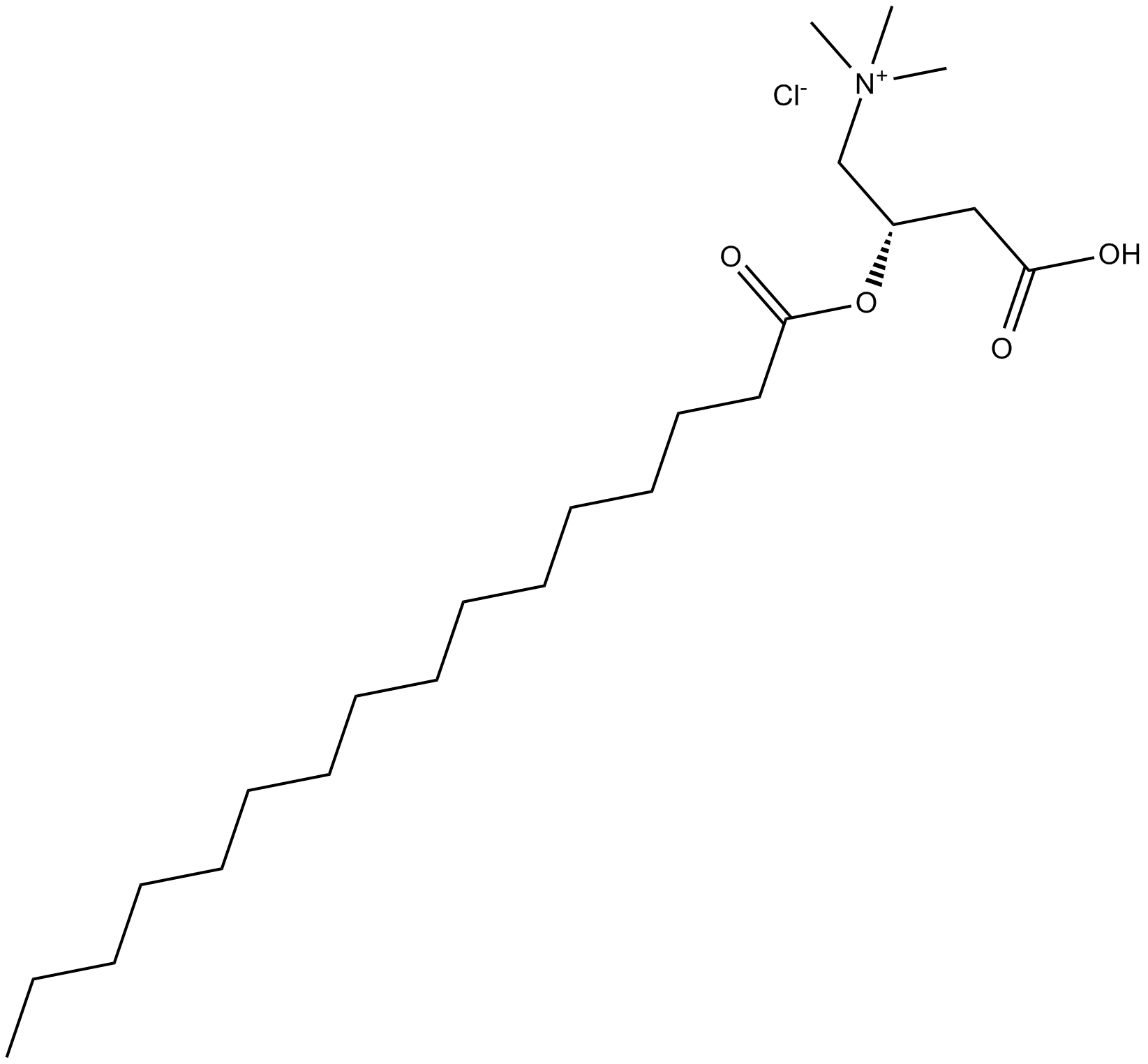
-
GC19444
(±)20-HDHA
(±)20-HDHA ((±)20-HDoHE) ist ein racemisches Gemisch und ein Autoxidationsprodukt von Docosahexaensäure (DHA).

-
GC40442
(±)8-HETE
(±)8-HETE ist eine der sechs Monohydroxyfettsäuren, die durch die nicht-enzymatische Oxidation von Arachidonsäure hergestellt werden.

-
GC30586
(±) Anabasine
(±) Anabasin ist ein zweiphasiges Muskelrelaxans.
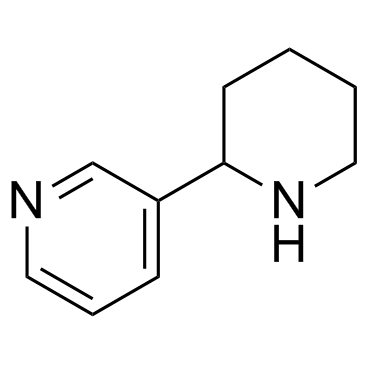
-
GC61647
(+)-Longifolene
(+)-Longifolen ist ein Sesquiterpenoid und ein Metabolit bei Kaninchen.
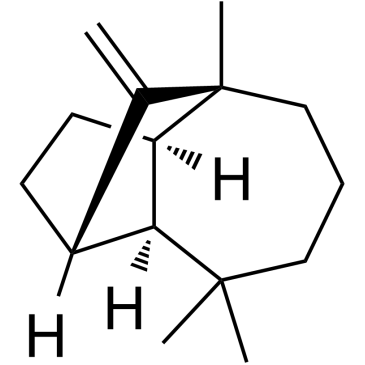
-
GC10675
(+,-)-Octopamine HCl
Octopamin (()-p-Octopamin)-Hydrochlorid, ein biogenes Monoamin, das strukturell mit Noradrenalin verwandt ist, wirkt als Neurohormon, Neuromodulator und Neurotransmitter bei Wirbellosen.
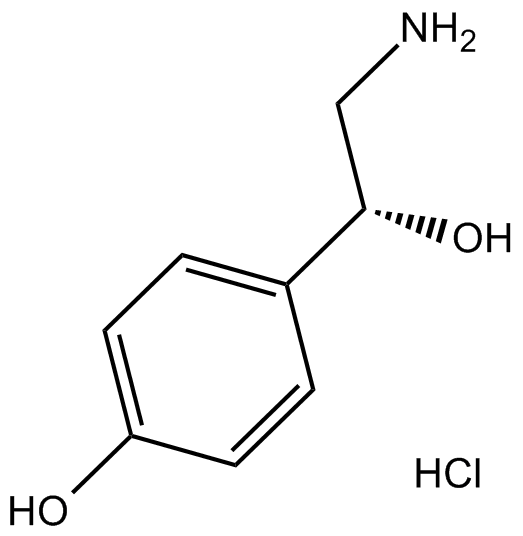
-
GC45245
(-)-Caryophyllene oxide
(-)-Caryophyllenoxid, isoliert aus Annona squamosa L.

-
GC17470
(-)-Cotinine
(-)-Cotinin ((-)-(-)-Cotinin), ein Tabakalkaloid und ein Hauptmetabolit von Nikotin, wird als biologischer Indikator zur Messung der Zusammensetzung von Tabakrauch verwendet

-
GC31620
(-)-Fucose (6-Desoxygalactose)
(-)-Fucose (6-Desoxygalactose) wird als Mitglied der Hexosen klassifiziert, spielt eine Rolle bei der Bestimmung der Antigen-Substruktur der A- und B-Blutgruppe, der Selectin-vermittelten Leukozyten-Endothel-AdhÄsion und Wirt-Mikroben-Wechselwirkungen.

-
GC34951
(-)-Menthol
(-)-Menthol ist eine SchlÜsselkomponente von PfefferminzÖl, das das transiente Rezeptorpotential Melastatin 8 (TRPM8), einen Ca2+--durchlÄssigen nichtselektiven Kationenkanal, bindet und aktiviert, um [Ca2+]i zu erhÖhen. Antitumor-AktivitÄt.

-
GC38299
(2-Aminoethyl)phosphonic acid
(2-Aminoethyl)phosphonsÄure ist ein kÖrpereigener Metabolit.
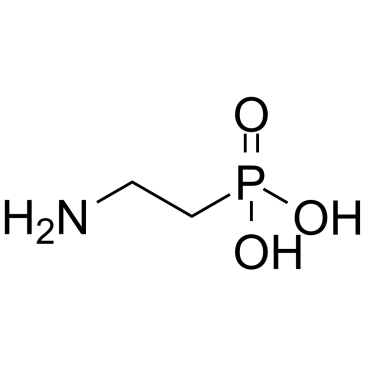
-
GC38265
(2R,3R)-2,3-Dihydroxysuccinic acid
(2R,3R)-2,3-DihydroxybernsteinsÄure (L-(+)-WeinsÄure) ist ein kÖrpereigener Metabolit.

-
GC62731
(2R,3R)-Butane-2,3-diol
(2R,3R)-Butan-2,3-diol ist ein kÖrpereigener Metabolit.

-
GC38296
(2S,3R,4S,5R)-2-Amino-3,4,5,6-tetrahydroxyhexanal hydrochloride
(2S,3R,4S,5R)-2-Amino-3,4,5,6-tetrahydroxyhexanalhydrochlorid ist ein endogener Metabolit.

-
GC33797
(3-Carboxypropyl)trimethylammonium chloride
(3-Carboxypropyl)trimethylammoniumchlorid ist eine angiopathische Substanz, die als intermediÄrer Metabolit von Darmmikrobiota produziert wird, die sich von Carnitin in diÄtetischem rotem Fleisch ernÄhren.
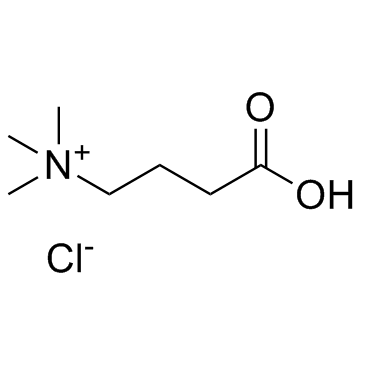
-
GC38144
(3S,4R,5S)-1,3,4,5,6-Pentahydroxyhexan-2-one
A monosaccharide

-
GC38283
(3S,4S,5R)-1,3,4,5,6-Pentahydroxyhexan-2-one
(3S,4S,5R)-1,3,4,5,6-Pentahydroxyhexan-2-on (D-(-)-Tagatose) ist ein seltenes, in der Natur vorkommendes Monosaccharid mit prÄbiotischen Eigenschaften.

-
GC12395
(D)-(+)-Neopterin
(D)-(+)-Neopterin (D-(+)-(D)-(+)-Neopterin, ein Abbauprodukt von Guanosintriphosphat (GTM), dient als Marker fÜr die Aktivierung des zellulÄren Immunsystems.
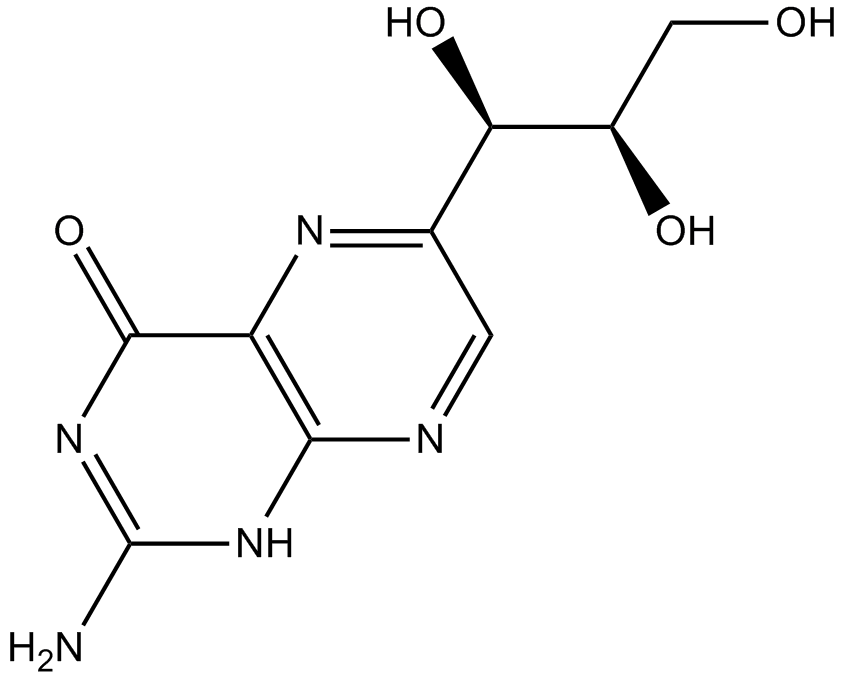
-
GC65239
(E)-3,4-(Methylenedioxy)cinnamic acid
(E)-3,4-(Methylendioxy)zimtsÄure ist ein ZimtsÄurederivat, das aus der Stammrinde von Brombya platynema gewonnen wird.
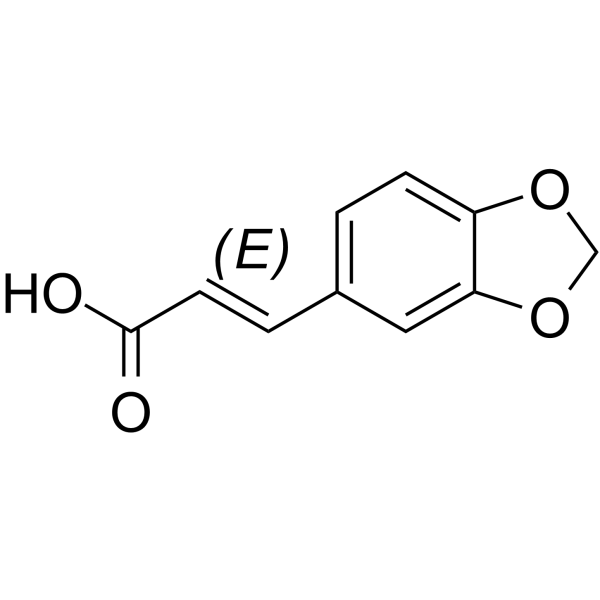
-
GC38684
(E)-m-Coumaric acid
(E)-m-CumarinsÄure (3-HydroxyzimtsÄure) ist eine aromatische SÄure, die in Lebensmitteln reichlich vorhanden ist.
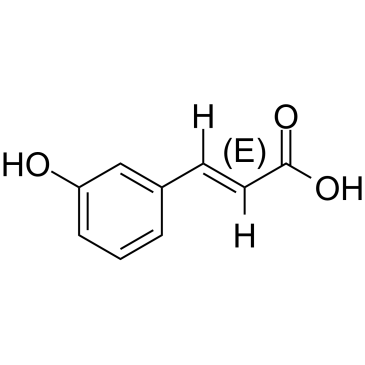
-
GC62734
(E)-Oct-2-enoic acid
(E)-Oct-2-ensÄure ist ein kÖrpereigener Metabolit.

-
GC60404
(Ethoxymethyl)benzene
(Ethoxymethyl)benzol ist ein kÖrpereigener Metabolit.
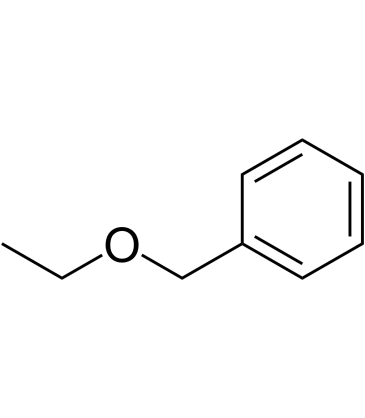
-
GA11210
(H-Cys-OH)2
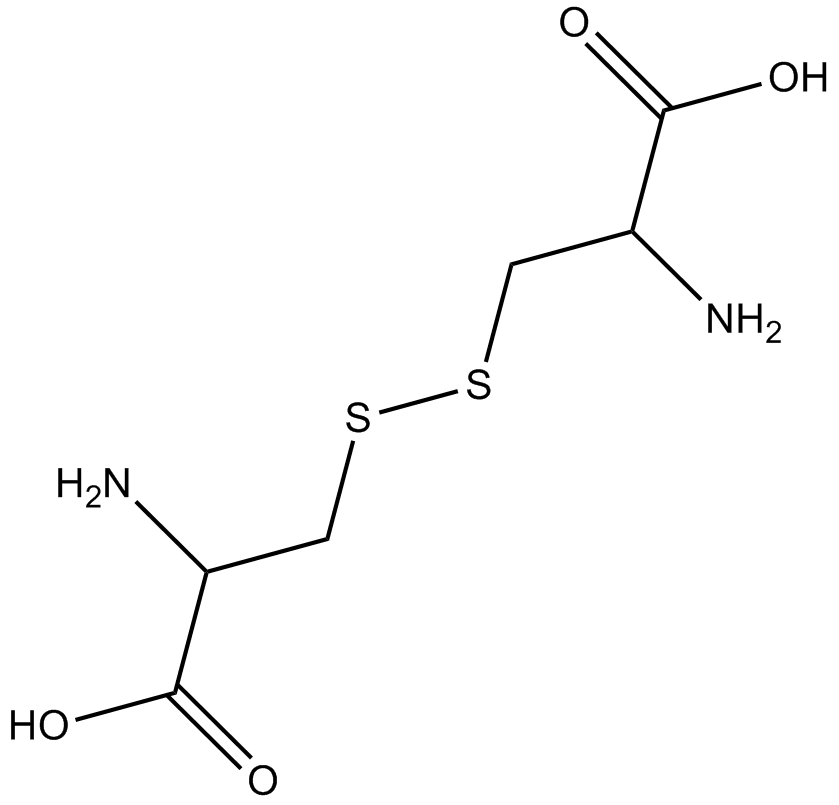
-
GC41721
(R)-α-Lipoic Acid
(R)-α-Lipoic acid is the naturally occurring enantiomer of lipoic acid, a cyclic disulfide antioxidant.

-
GC34442
(R)-(+)-Citronellal
(R)-(+)-Citronellal, isoliert aus Zitrus-, Lavendel- und EukalyptusÖlen, ist ein Monoterpenoid und Hauptbestandteil von CitronellalÖl mit ausgeprÄgtem Zitronenduft.

-
GC38262
(R)-(-)-1,3-Butanediol
(R)-(-)-1,3-Butandiol dient zur Regulierung des Kohlenhydrat- und Lipidstoffwechsels.
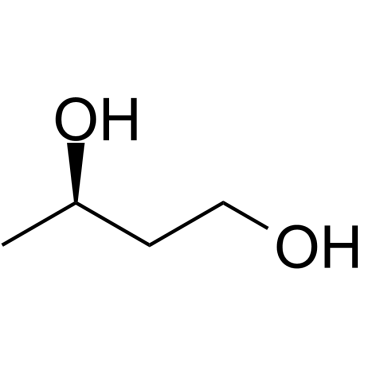
-
GC30210
(R)-3-Hydroxybutanoic acid
(R)-3-HydroxybutansÄure ist ein Metabolit und wird aus AcetessigsÄure katalysiert durch 3-Hydroxybutyrat-Dehydrogenase umgewandelt.
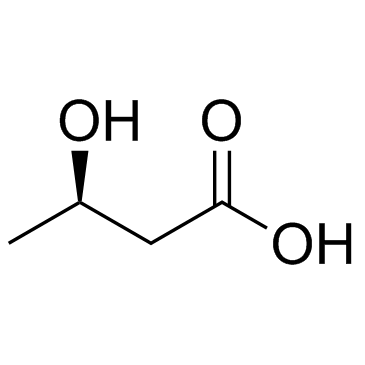
-
GC61759
(R)-3-Hydroxybutanoic acid sodium
(R)-3-HydroxybutansÄure-Natrium ((R)-3-HydroxybuttersÄure) ist ein Metabolit, der aus AcetessigsÄure umgewandelt wird, katalysiert durch 3-Hydroxybutyrat-Dehydrogenase.
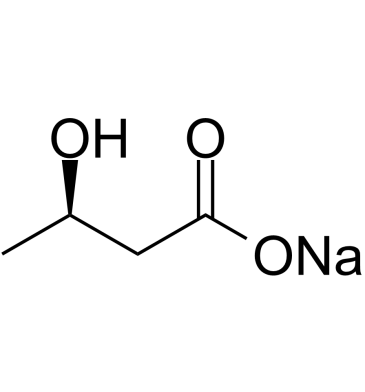
-
GC30661
(R)-3-Hydroxyisobutyric acid
(R)-3-HydroxyisobuttersÄure ist ein Zwischenprodukt in den Signalwegen von L-Valin und Thymin und spielt eine wichtige Rolle bei der Diagnose der sehr seltenen erblichen Stoffwechselerkrankungen 3-HydroxyisobuttersÄure-Azidurie und Methylmalon-Semialdehyd-Dehydrogenase-Mangel.
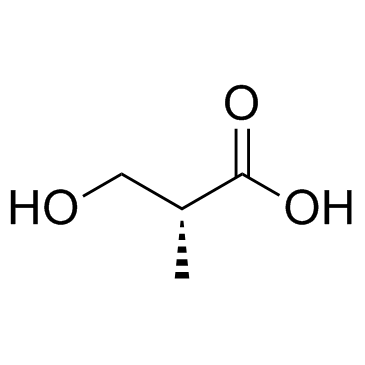
-
GC38282
(R)-5-Oxopyrrolidine-2-carboxylic acid
(R)-5-Oxopyrrolidin-2-carbonsÄure ist ein kÖrpereigener Metabolit.

-
GC38364
(R)-Ornithine hydrochloride

-
GC38363
(R)-pyrrolidine-2-carboxylic acid
(R)-Pyrrolidin-2-carbonsÄure ist ein kÖrpereigener Metabolit.
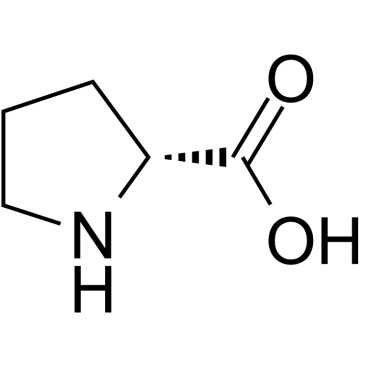
-
GC39832
(R,R)-(+)-Hydrobenzoin
(R,R)-(+)-Hydrobenzoin ist ein Organokatalysator.
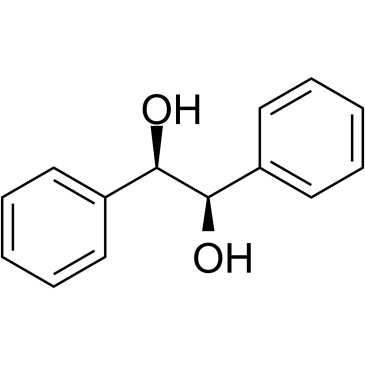
-
GC68414
(Rac)-Atropine-d3
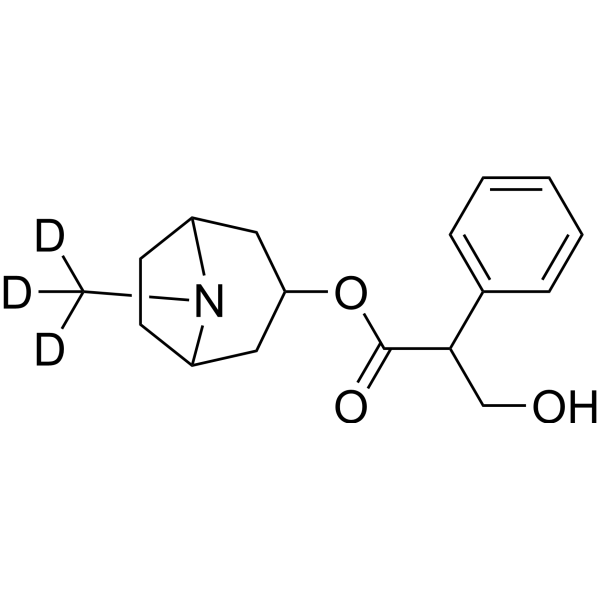
-
GC67993
(Rac)-Cotinine-d4
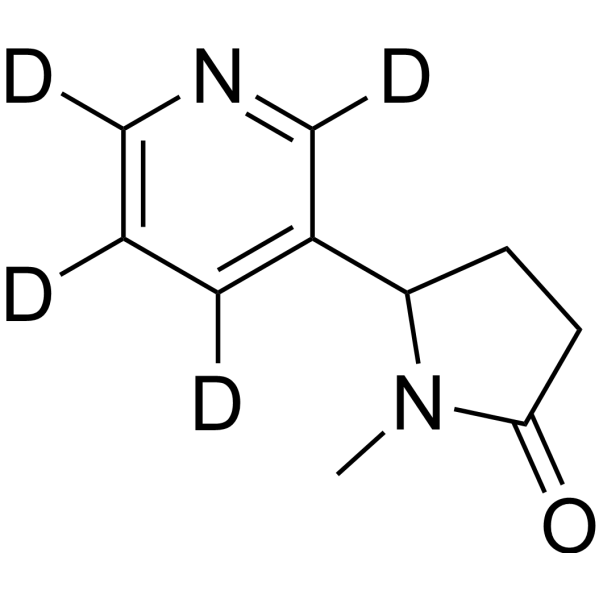
-
GC39833
(S)-(+)-1,2-Propanediol
(S)-(+)-1,2-Propandiol ist ein kÖrpereigener Metabolit.
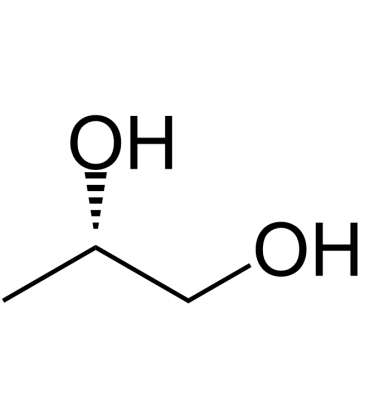
-
GC62747
(S)-(-)-Citronellal
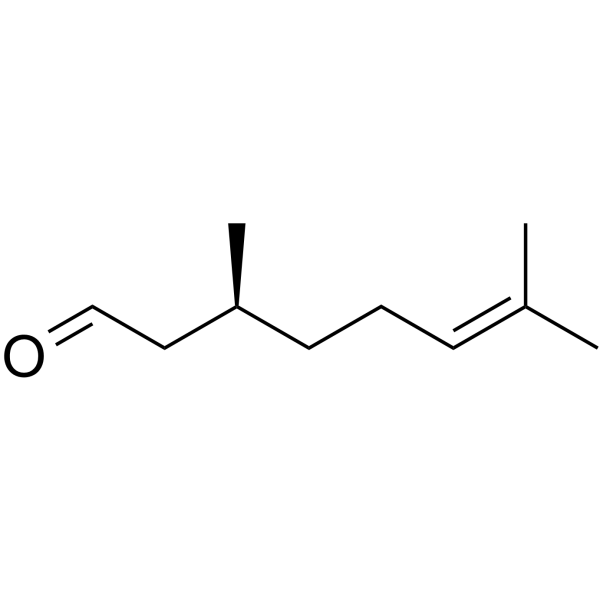
-
GC38371
(S)-(-)-Phenylethanol
(S)-(-)-Phenylethanol ist ein kÖrpereigener Metabolit.
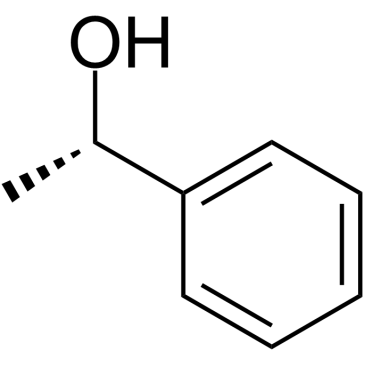
-
GC62748
(S)-2-Amino-3-(4-hydroxy-3,5-diiodophenyl)propanoic acid dihydrate
(S)-2-Amino-3-(4-hydroxy-3,5-diiodphenyl)propansÄuredihydrat ist ein kÖrpereigener Metabolit.

-
GC31630
(S)-2-Hydroxy-3-phenylpropanoic acid
(S)-2-Hydroxy-3-phenylpropansÄure ist ein Produkt des Phenylalanin-Katabolismus.
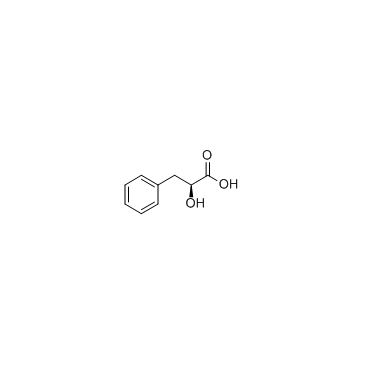
-
GC64746
(S)-2-Hydroxybutanoic acid
(S)-2-HydroxybutansÄure ist das S-Enantiomer von2-HydroxybutansÄure.
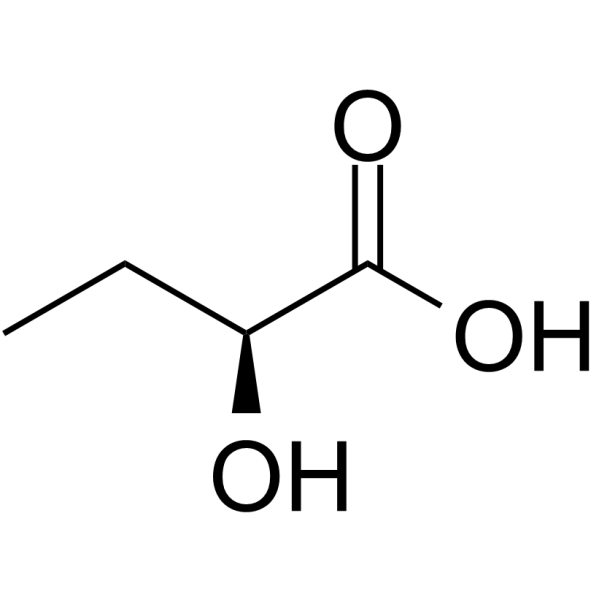
-
GC31622
(S)-2-Hydroxysuccinic acid
(S)-2-HydroxybernsteinsÄure ((S)-2-HydroxybernsteinsÄure) ist eine DicarbonsÄure in natÜrlich vorkommender Form, trÄgt zum angenehm sÄuerlichen Geschmack von FrÜchten bei und wird als Lebensmittelzusatzstoff verwendet.
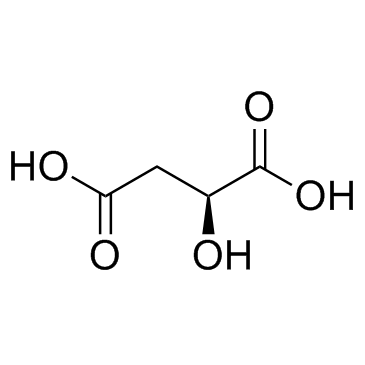
-
GC30649
(S)-3,4-Dihydroxybutyric acid
(S)-3,4-DihydroxybuttersÄure ist ein normaler menschlicher Metabolit im Urin, der bei Patienten mit Succinat-Semialdehyd-Dehydrogenase (SSADH)-Mangel in erhÖhter Konzentration ausgeschieden wird.
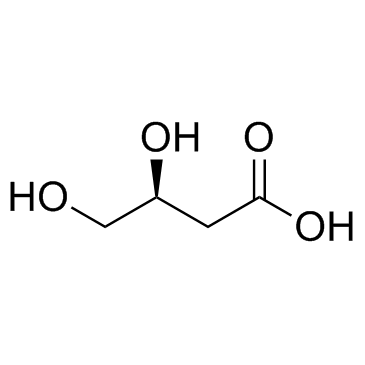
-
GC64473
(S)-3,4-Dihydroxybutyric acid lithium hydrate
(S)-3,4-DihydroxybuttersÄure (Lithiumhydrat) ist ein normaler menschlicher Metabolit im Urin, der bei Patienten mit Succinat-Semialdehyd-Dehydrogenase (SSADH)-Mangel in erhÖhter Konzentration ausgeschieden wird.

-
GC62749
(S)-3-Hydroxy-2-(Phosphonooxy)Propanoic Acid
(S)-3-Hydroxy-2-(Phosphonooxy)propansÄure ist ein kÖrpereigener Metabolit.
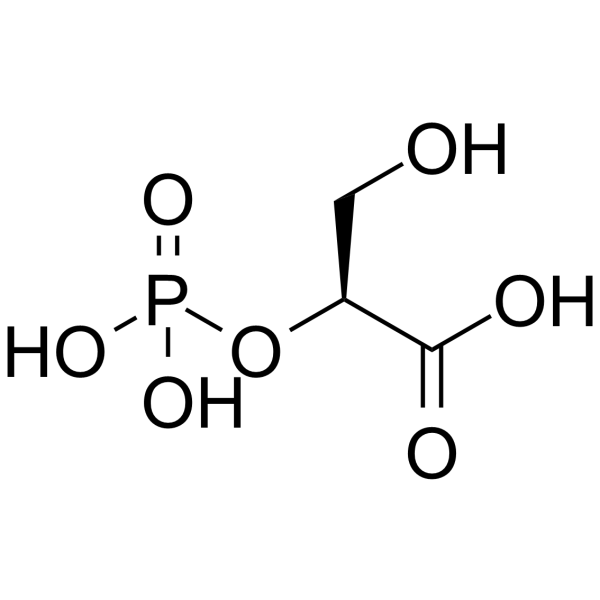
-
GC30304
(S)-3-Hydroxybutanoic acid ((S)-β-Hydroxybutanoic acid)
(S)-3-HydroxybutansÄure ((S)-β-HydroxybutansÄure) ist ein normaler menschlicher Metabolit, der bei geriatrischen Patienten, die von einer Depression zurÜckgekehrt sind, erhÖht gefunden wurde.
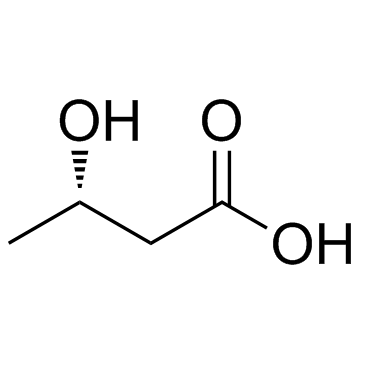
-
GC30623
(S)-3-Hydroxyisobutyric acid
(S)-3-HydroxyisobuttersÄure ist ein wichtiger interorganischer Metabolit, ein Zwischenprodukt in den Stoffwechselwegen von L-Valin und Thymin und ein gutes gluconeogenes Substrat.
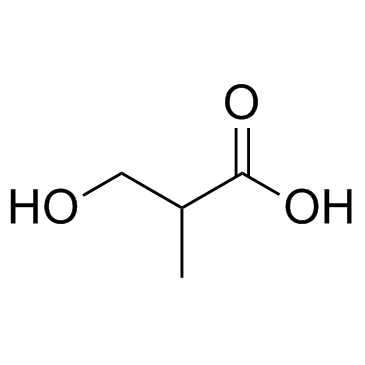
-
GC30148
(S)-b-aminoisobutyric acid
(S)-b-AminoisobuttersÄure ist eine Nicht-Protein-AminosÄure, die aus dem Katabolismus von Thymin und Valin stammt.

-
GC62751
(S)-Higenamine hydrobromide
(S)-Higenamin ((S)-Norcolaurin)-Hydrobromid, ein S-Enantiomer von Higenamin, ist die Einstiegsverbindung in die Benzylisochinolin-Alkaloid-Biosynthese.
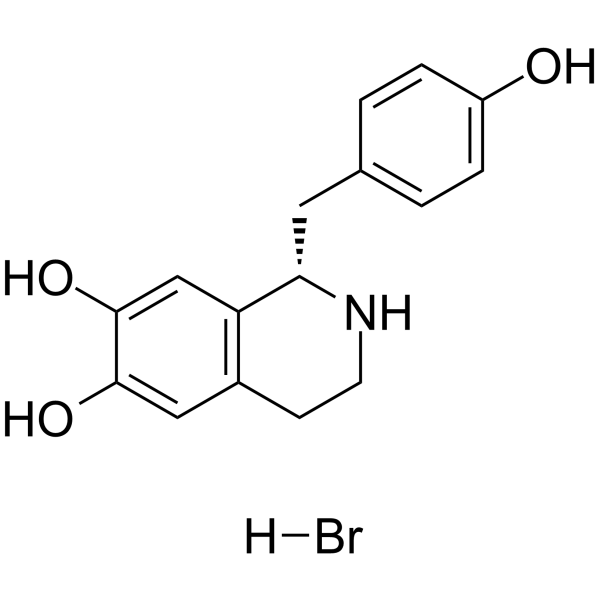
-
GC30735
(S)-Leucic acid
(S)-LeucinsÄure ist ein AminosÄuremetabolit.
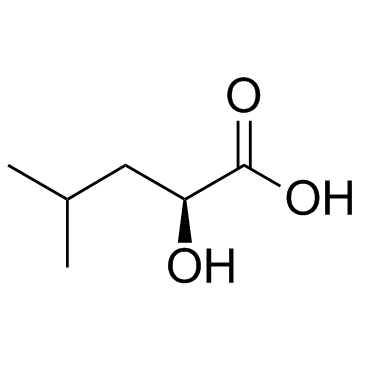
-
GC69914
(S)-Malic acid-d3
(S)-Malic acid-d3 ist das Deuterium-Isotop von (S)-Malic acid. (S)-Malic acid ((S)-2-Hydroxysuccinic acid) ist eine natürlich vorkommende Dicarbonsäure und Quelle für den fruchtigen Geschmack, die häufig als Lebensmittelzusatzstoff verwendet wird.
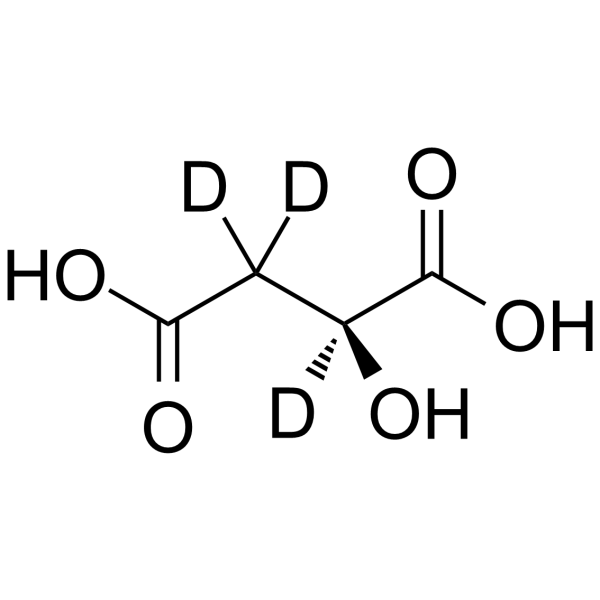
-
GC35003
(S)-Nornicotine

-
GC31253
(Z)-Hexadec-9-enoic acid
(Z)-Hexadec-9-ensÄure, eine FettsÄurezusammensetzung, ist an der Verhinderung des Todes durch zerebrovaskulÄre StÖrungen bei SHRSP-Ratten beteiligt.
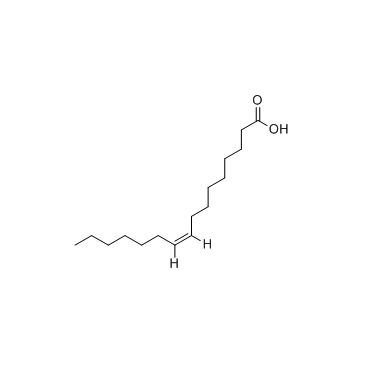
-
GC16375
(±)-Jasmonic Acid methyl ester
(±)-JasmonsÄuremethylester ist ein kÖrpereigener Metabolit.
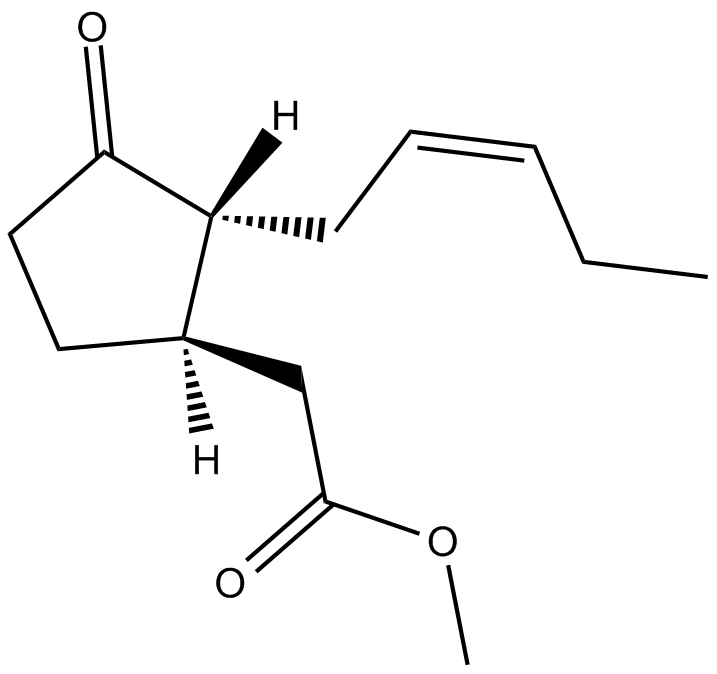
-
GC41765
1,2,3-Tri-13(Z)-Docosenoyl-rac-glycerol
1,2,3-Tri-13(Z)-Docosenoyl-rac-glycerol ist ein TrierucasÄuretriglycerid aus dem SamenÖl.

-
GC41767
1,2,3-Triarachidonoyl-rac-glycerol
1,2,3-Triarachidonoyl-rac-glycerol ist ein kÖrpereigener Metabolit.

-
GC41768
1,2,3-Tridecanoyl-rac-glycerol
1,2,3-Tridecanoyl-rac-glycerol (Glyceryl tridecanoate) ist eine oral verfÜgbare Vorstufe von DecansÄure (DA) und kann zu DA hydrolysiert werden.

-
GC46041
1,2,3-Trilinoleoyl-rac-glycerol
1,2,3-Trilinoleoyl-rac-glycerol ist ein kÖrpereigener Metabolit.

-
GC41774
1,2,3-Trimyristoyl-rac-glycerol
1,2,3-Trimyristoyl-rac-glycerol, eine aktive molluskizide Komponente von Myristica fragransHoutt, hemmt signifikant die AktivitÄten von Acetylcholinesterase (AChE), saurer und alkalischer Phosphatase (ACP/ALP) im Nervengewebe von Lymnaea acuminata.

-
GC41778
1,2,3-Tripalmitoyl-rac-glycerol
1,2,3-Tripalmitoyl-rac-glycerol ist ein kÖrpereigener Metabolit.

-
GC39766
1,2-Cyclohexanedione
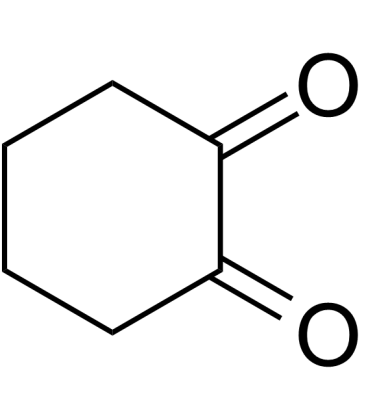
-
GC41804
1,2-Dimyristoyl-sn-glycero-3-PE
1,2-Dimyristoyl-sn-glycero-3-PE ist ein kÖrpereigener Metabolit.

-
GC41822
1,2-Dipalmitoyl-sn-glycero-3-PE
1,2-Dipalmitoyl-sn-glycero-3-PE ist ein kÖrpereigener Metabolit.

-
GC41825
1,2-Dipalmitoyl-sn-glycero-3-phosphate (sodium salt)
1,2-Dipalmitoyl-sn-glycero-3-phosphat (Natriumsalz) (Verbindung 3-F7) ist eine PhosphatidsÄure und ein menschlicher endogener Metabolit[1]In Vitro: PhosphatidsÄuren sind biologisch aktive Lipide, die eine große Bandbreite stimulieren kÖnnen von Reaktionen in vielen verschiedenen Zelltypen, wie Thrombozytenaggregation, Kontraktion glatter Muskeln, vasoaktive Wirkungen in vivo, Chemotaxis, Expression von AdhÄsionsmolekÜlen, erhÖhte Tight-Junction-PermeabilitÄt von Endothelzellen, Induktion von Stressfasern, Modulation der HerzkontraktilitÄt und viele andere .

-
GC13877
1,2-Dipalmitoyl-sn-glycerol
1,2-Dipalmitoyl-sn-glycerol ist ein kÖrpereigener Metabolit.
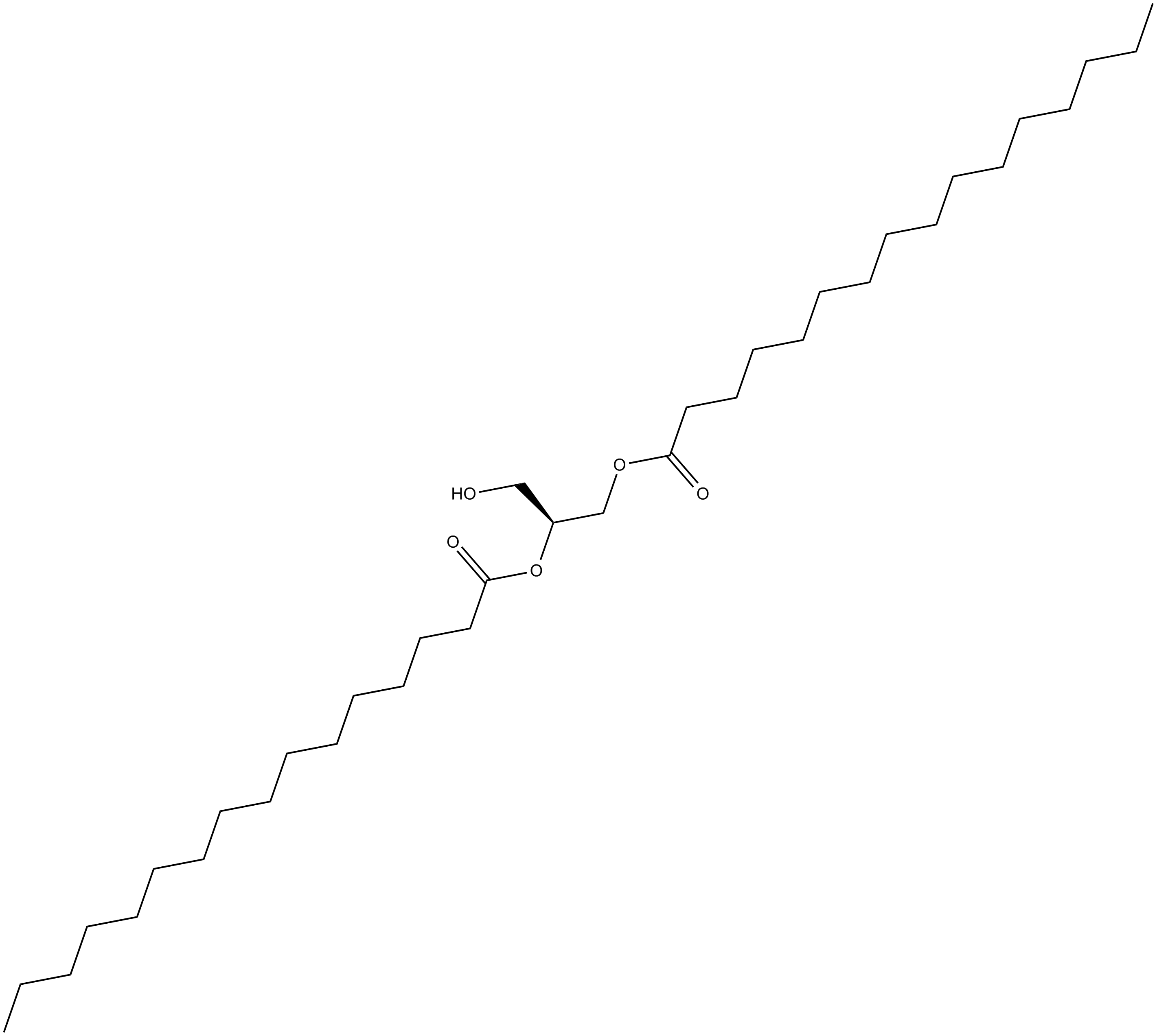
-
GC33621
1,2-Dipalmitoyl-sn-glycerol 3-phosphate
1,2-Dipalmitoyl-sn-glycerol-3-phosphat (Verbindung 3-F7) ist eine PhosphatidsÄure und ein menschlicher endogener Metabolit.
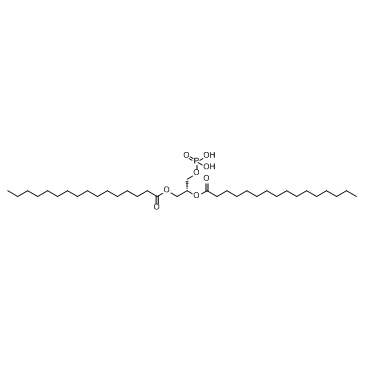
-
GC33789
1,2-Distearoyl-sn-glycero-3-phosphorylethanolamine (1,2-DSPE)
1,2-Distearoyl-sn-glycero-3-phosphorylethanolamin (1,2-DSPE) (DSPE) ist ein Phosphoethanolamin (PE)-Lipid, das bei der Synthese von Liposomen verwendet werden kann.
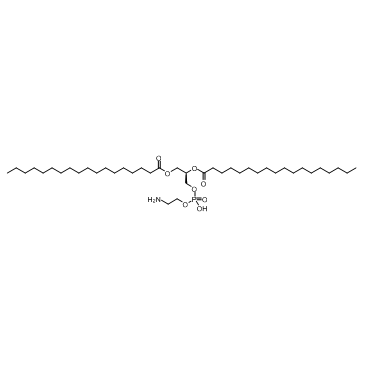
-
GC62352
1,3-Butanediol
1,3-Butandiol, ein Ethanoldimer, das eine Kalorienquelle fÜr die menschliche ErnÄhrung darstellt.
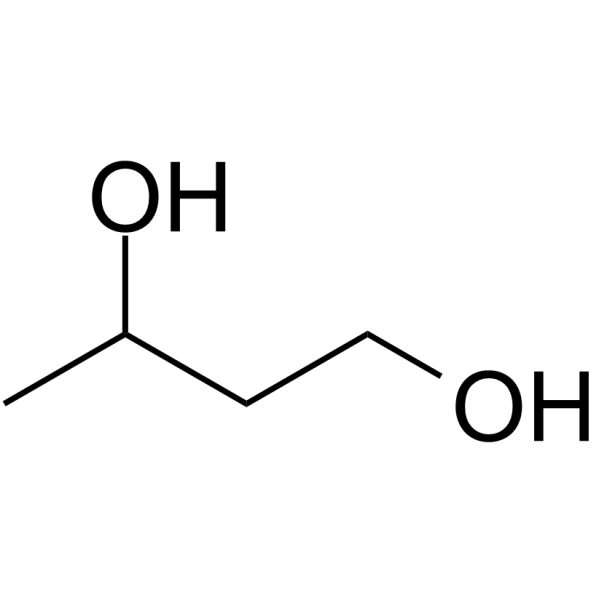
-
GC30742
1,3-Diaminopropane
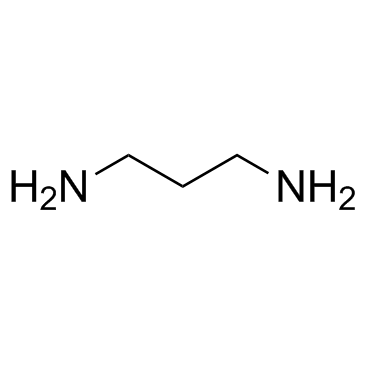
-
GC60433
1,3-Dimethyluracil
1,3-Dimethyluracil ist ein Pyrimidon, das sich von einem Uracil ableitet.
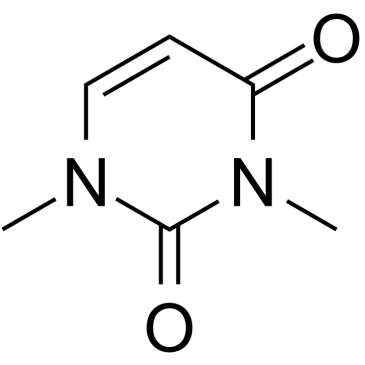
-
GC30749
1,3-Dimethyluric acid
1,3-DimethylurinsÄure ist ein Produkt des Theophyllin-Stoffwechsels beim Menschen.
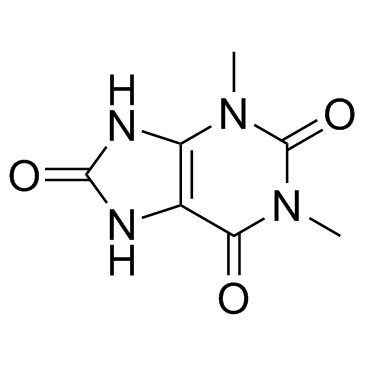
-
GC60011
1,3-Dithiane
1,3-Dithian ist ein geschÜtztes Formaldehyd-Anion-Äquivalent, das als nÜtzliches markiertes Synthon dienen kÖnnte.
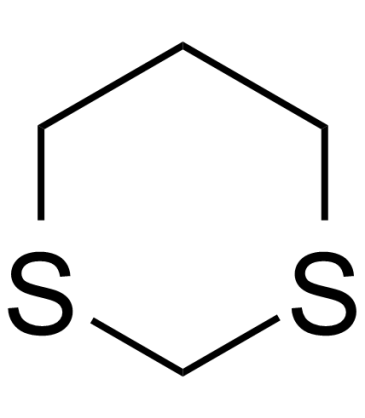
-
GC62755
1,4-D-Gulonolactone
1,4-D-Gulonolacton ist ein kÖrpereigener Metabolit.
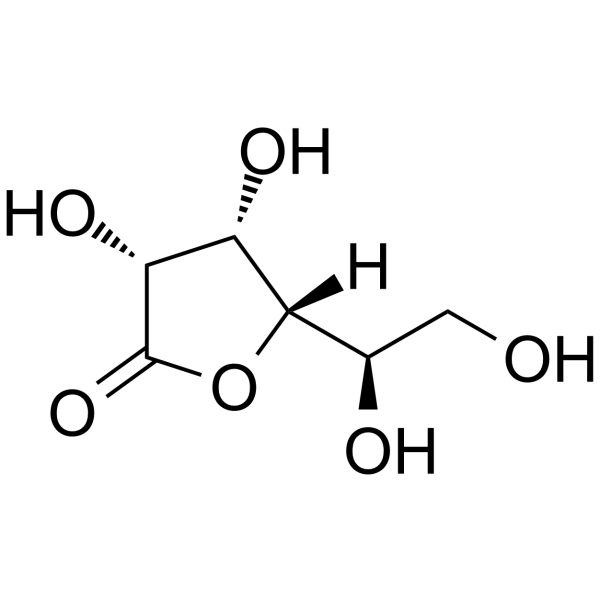
-
GC35039
1,4-Diaminobutane dihydrochloride
1,4-Diaminobutan (Putrescin)-Dihydrochlorid ist ein endogenes Metabolit, das als Indikator fÜr umweltbedingten Stress in hÖheren Pflanzen dient: Gerste und Raps, die mit Cr(III) oder Cr(VI) gestresst sind.
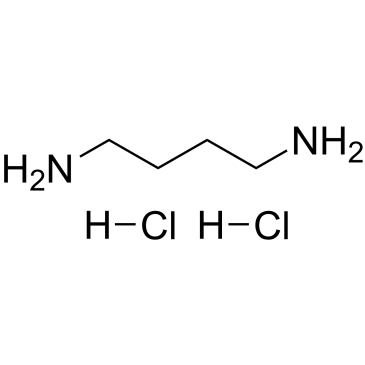
-
GC68486
1,4-Diaminobutane-d8 dihydrochloride
1,4-Diaminobutan-d8 (Dihydrochlorid) ist das deuterierte Analogon von 1,4-Diaminobutan Dihydrochlorid. 1,4-Diaminobutan (Putrescin) Dihydrochlorid ist ein endogenes Stoffwechselprodukt und dient als Indikator für Verschmutzung durch Cr(III) oder Cr(VI)-Stress bei höheren Pflanzen wie Gerste und Raps.
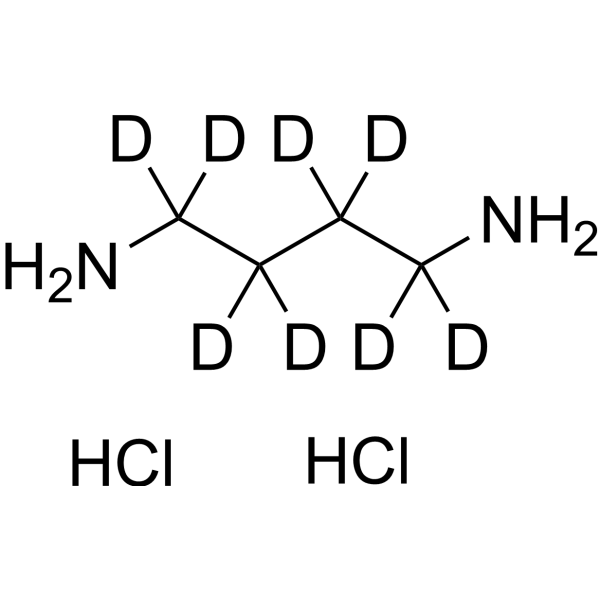
-
GC60435
1,4-Dimethoxybenzene
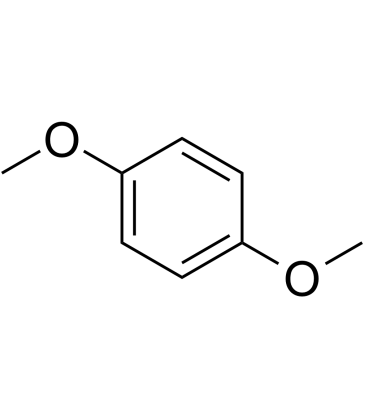
-
GC38242
1,4-Dioxane-2,5-diol
1,4-Dioxan-2,5-diol ist ein kÖrpereigener Metabolit.
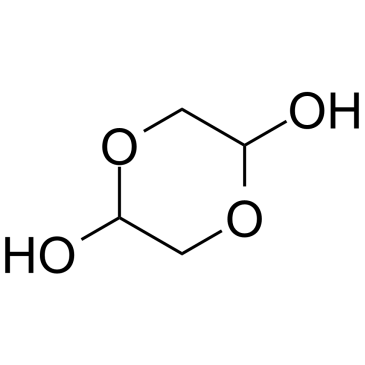
-
GC33801
1,5-Anhydrosorbitol
1,5-Anhydrosorbitol ist ein Kurzzeitmarker fÜr die glykÄmische Kontrolle.
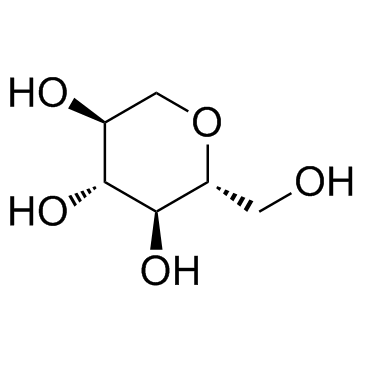
-
GC19717
1,6-anhydroglucose
1,6-Anhydroglucose (1,6-Anhydro-β-D-Glucopyranose) ist ein Anhydrozucker, der durch Glucan-Pyrolyse hergestellt wird und in der Natur weit verbreitet ist.
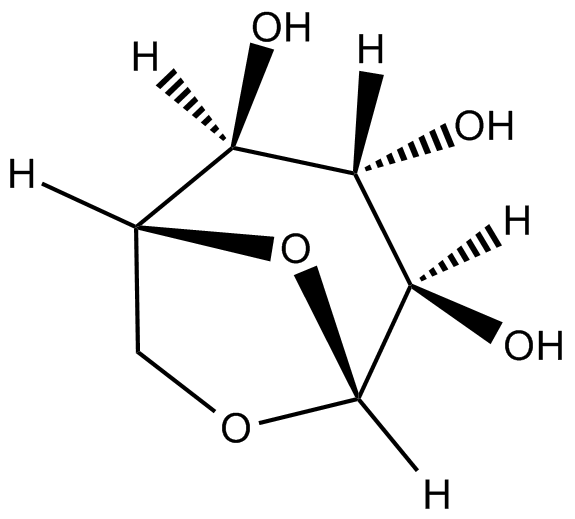
-
GC38270
1-Aminocyclopropane-1-carboxylic acid
1-Aminocyclopropan-1-carbonsÄure ist ein kÖrpereigener Metabolit.
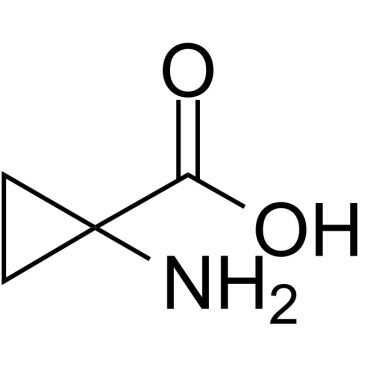
-
GC64404
1-Aminopropan-2-ol
1-Aminopropan-2-ol ist ein mikrobieller Metabolismus des Aminoalkoholstoffwechsels Über Propionaldehyd und Acetaldehyd in einer Pseudomonas-Art .
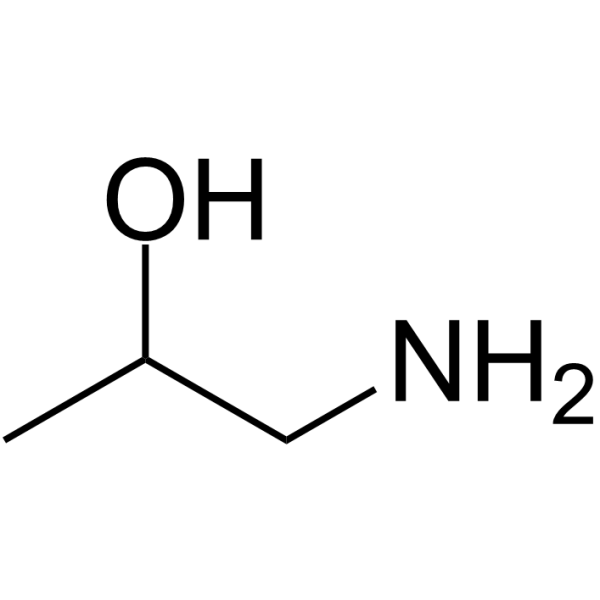
-
GC35029
1-Arachidoyl-sn-glycero-3-phosphocholine
1-Arachidoyl-sn-glycero-3-phosphocholin ist ein Lysophospholipid (LyP).
